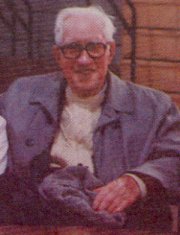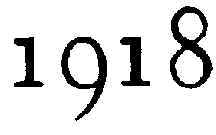Tom Foley Fenway Park Peanut Vendor — 1918: Babe Ruth and the World Champion Boston Red Sox by Allan Wood
Someone Can Recall Red Sox Title
By Allan Wood
In September 1918, the Red Sox won their third World Series title in four years. As their tortured fans are aware, they haven’t won another.
 Thomas Foley remembers when the Red Sox were champions. In 1918, he was 14 and a vendor at Fenway Park.
Thomas Foley remembers when the Red Sox were champions. In 1918, he was 14 and a vendor at Fenway Park.
Part of Foley’s job included arriving at the park at 8 a.m. on Saturdays to bag peanuts for the upcoming week. When the Red Sox were in town, their ace, 23-year-old Babe Ruth, would show up before morning practice and hang out with the boys.
“Babe Ruth was an angel to us,” said Foley, now 93. “He’d come in every Saturday and work with us for about an hour. We’d all race to see who could bag the most and every once in a while he’d flip a dollar bill across the table. Some kid would grab it and be thrilled.
“He’d talk a blue streak the whole time, joking and laughing. He told us to be good boys and to play baseball. ‘Be sure and be ballplayers, because there’s good money in it.’ He thought that if we worked hard enough we could be as good as he was.”
A friend who worked at Fenway told Foley about the job. He attended the High School of Commerce at the time, a convenient five-minute walk from the park. Another of Foley’s coworkers was Maurice Tobin, who later became a two-term mayor of Boston (1938-41 and 1941-44) and governor of Massachusetts (1945-47).
As the afternoon’s crowd filed into Fenway, Foley, dressed in his uniform of a white coat and white cap with a black visor, hawked scorecards, then switched to peanuts, soda, hot dogs or chocolate bars once the game began. He worked all sections of the park.
“After you were there a while, you knew where to go,” he says. “There would be about 60 kids working, but the ones that needed the money most were there every day. Some days I’d make only 20 cents but on an ordinary day you’d make two dollars. You could make five to 10 dollars a week going there after school.”
Foley clearly remembers his most lucrative day — Sept. 4, 1920. The Yankees were in town for a doubleheader, and a then-record 33,027 fans were shoe-horned into Fenway. Another 10,000 were turned away before the games began.
“That was a once-in-a-lifetime day,” Foley said. “There was a pitcher named Carl Mays, an under-handed pitcher, who used to play for the Red Sox. Two weeks before, he threw a ball at a man’s head, killed him. This was his first appearance back in Boston and everybody went to heckle him. I made $16 that day, all nickels and dimes.”
Foley confesses how he made as much in one day as many men earned in a week. He cheated his customers.
“A fellow would give you a bill and you’d say, ‘I’ll be right back with the change,'” he said. “If you were in right field, then you’d ease your way out of that area and wind up over in left. Never bring back his change. Or if something cost a dime and he gave you a quarter, you’d give him a nickel and try to get away fast. That’s how I made the $16. Probably half of it was shortchanging.”
One of Foley’s fondest memories was a rainy afternoon he spent with Hall of Fame pitcher Walter Johnson.
“He had an awful cold that day,” Foley says. “He was all bundled up with sweaters and a big overcoat. The doctor told him to stay in bed, but he wanted to watch the game. There was almost no one in the park, and I spotted him sitting alone out in the left-field seats and I went over. He said, ‘Business isn’t good today, is it? You want to sit here and talk with me?’
“So I sat there the rest of the afternoon. He talked about where he lived and what kind of country it was. In those days, a kid like me had never been more than 10 miles away from home. He explained different things about the game, telling me what the next pitch was going to be and why various things were done. When I was leaving, he gave me a couple dollars. That was my sales for the day.”
Fenway Park is best known for its Green Monster, but in 1918 it was famous for the clique of 50-75 gamblers who sat in the first-base pavilion. “They had their same seats every day,” Foley said. “The ushers kept their seats for them. Half of them were businessmen — undertakers, doctors, lawyers, butchers — and betting was their recreation. Others did it for a living. They’d bet quarters and half-dollars on everything. Whether the next pitch would be a ball or a strike, if the batter would get a hit.
“The kids knew the gamblers and they knew us. And they were good customers. If they bought a bag of peanuts for 15 cents, they’d give you a quarter and tell you to keep the change. The gamblers were good tippers.”
1997 by Allan James Wood
